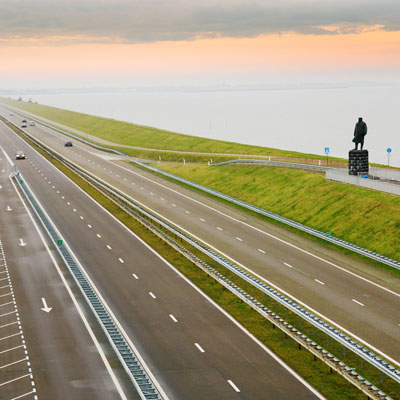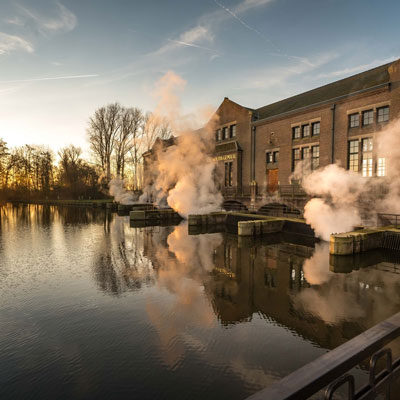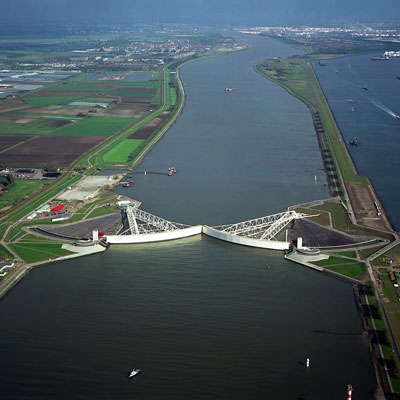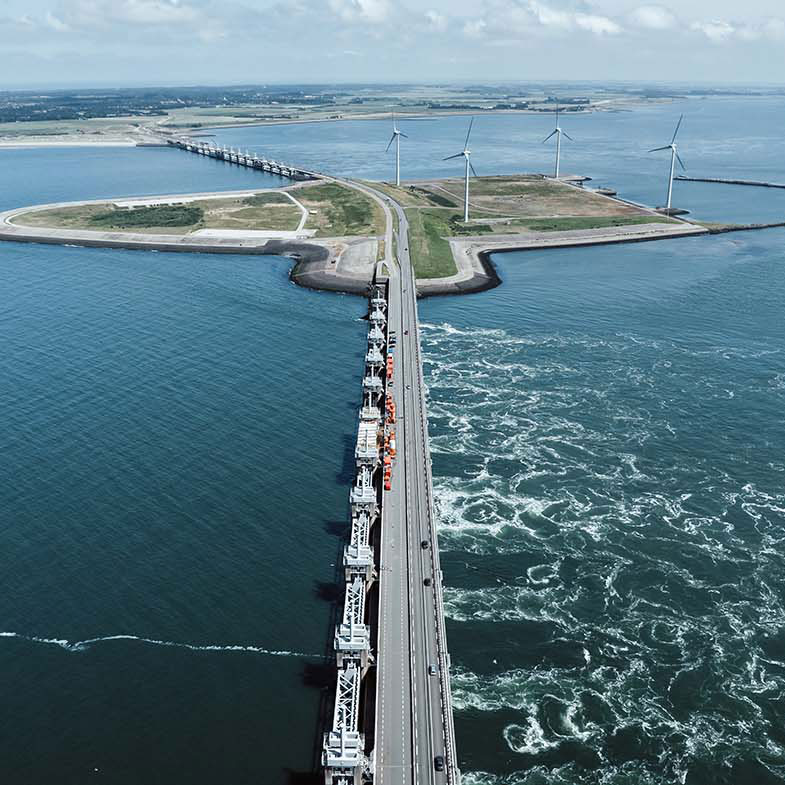Discover the Unique Dutch Waterworks: A Must-See Experience!
The Netherlands, a land shaped by water, boasts some of the world’s most impressive engineering marvels—its waterworks. They’re crucial for the country’s existence because nearly a third of the land lies below sea level. Our famous dikes are instrumental in protecting the land from flooding and enabling its development. Other examples of waterworks include pumping stations. Here are four impressive building blocks you can use for your tour to explore our special waterworks.
Afsluitdijk (Enclosing dike)
The Afsluitdijk, or Enclosing Dike, is probably the most famous of all man-made Dutch water barriers. It’s almost a hundred years old and stretches an impressive 32 kilometers (20 miles) between the provinces of North Holland and Friesland. To prevent flooding, this iconic structure transformed a once-turbulent saltwater inlet into a tranquil freshwater lake by blocking off an entire sea, showcasing the Netherlands' mastery of water management. We visit a watchtower to get panoramic views of the area, where engineering and nature coexist beautifully. And if you want to learn more, we can also include the Visitor Center to get to know the history and technology behind the dike and its significance in protecting the Netherlands from flooding. (Approx. 45 minutes)


Wouda Pumping Station
In the Frisian village of Lemmer, you can visit "The Wouda Pumping Station," one of the few UNESCO World Heritage sites in the country. It opened in 1920 and is the largest steam-pumping station ever built (and still in operation). It represents the high point of the contribution made by Dutch engineers and architects in protecting their people and land against the natural forces of water. Designed in the style of the Amsterdam School, the pumping station is as much a work of art as it is a technical masterpiece. Its elegant red-brick façade, arched windows, and intricate detailing make it a stunning sight. The visitor center offers a family-friendly experience that explains how the station helps manage the water levels. (Approx. 1 hour 45 minutes)


Maeslandkering
Witness one of the Netherlands' most impressive feats of engineering at Maeslantkering, a massive storm surge barrier protecting Rotterdam and its surroundings from the power of the North Sea. As part of the Delta Works, this awe-inspiring structure is one of the largest moving flood barriers in the world—each gate is as tall as the Eiffel Tower when laid flat! At the visitor center, dive into the fascinating story of the Netherlands' ongoing battle against water and learn how this high-tech masterpiece safeguards millions of people from flooding. For those fascinated by innovation, sustainability, and Dutch water management, Maeslantkering is an unmissable destination—where cutting-edge technology meets an age-old struggle against the sea. (Approx. 1 hour 30 minutes)


Delta Works Zeeland
For visitors who have time to go all the way to the south-western corner of the country, a (half)day trip to the Delta Works in the province of Zeeland is an excellent idea! This series of dams, sluices, locks, and storm surge barriers was built to protect the Netherlands from flooding after the devastating North Sea Flood of 1953. Often referred to as the “Eighth Wonder of the World,” the Delta Works stands as a symbol of Dutch ingenuity and resilience. The main Storm Surge Barrier is the crown jewel of the Delta Works. Spanning nine kilometers, it’s a movable barrier that protects against high tides while allowing tidal flow to preserve the surrounding ecosystem. Take a tour to learn how it works and see it up close. There’s also a museum dedicated to the 1953 flood that prompted the Delta Works' creation. (Approx. 3 hours 30 minutes)


You have selected 1 building blocks.
Request your proposal View your selection Add more building blocks